This article is sponsored by TRENDnet.
[Image courtesy Threadless.com]
Every homeowner wants fast, trouble free wireless networking. There are no messy cables, adding devices is a snap and your network is available wherever you want to roam.
But strong signals are key to having a fast, reliable Wi-Fi network and that’s not always possible with a single wireless router. Home size and construction materials (brick, masonry and old plaster lath walls kill Wi-Fi signals) may cause "dead spots" that just can’t be reached. This is especially true for the 5 GHz band that must be used to achieve the much higher speeds offered by AC class Wi-Fi.
Many people turn to wireless extenders to solve weak Wi-Fi signals. This device receives the signal from your router, then retransmits it to your devices. Although wireless extenders can be placed anywhere you have AC power, good extender placement can be tricky, since it must be placed where it receives a strong signal. Otherwise the extender signal will provide only a trickle of data that is no good for video streaming, let alone fast web browsing.
A better solution to wireless network extension is adding an access point (AP), i.e. another Wi-Fi radio without the router functions, connected back to your main router via Ethernet. The wired Ethernet connection brings full network bandwidth to the AP, so connecting to it is just like connecting to your main router.
But if you don’t have Ethernet where you want to place your AP, powerline networking is an excellent alternative. Powerline networking uses your home’s AC power wiring to put an Ethernet connection wherever you have a wall outlet. Although the powerline connection isn’t as fast as standard Gigabit Ethernet, it’s usually much faster and more stable than using a Wi-Fi extender.
To work this magic, you’ll need:
- A pair of powerline adapters
- A wireless router to convert to an access point
- Two Ethernet cables (usually included with the powerline kit and router)
We’ll be using TRENDnet’s TPL-421E2K Powerline 1200 AV2 Adapter Kit with Built-in Outlet for the powerline adapters and the TEW-824DRU AC1750 Dual Band Wireless Router with StreamBoost Technology for the wireless router.
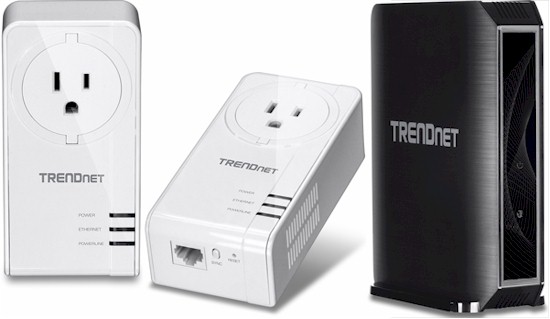
TRENDnet TPL-421E2K powerline adapters and TEW-824DRU AC1750 router
Step 1: Set up the powerline adapters
Powerline adapters are very easy to install; simply plug them in and they’ll usually link right up, as indicated by the powerline light on each adapter. Install the first adapter in an outlet near your home’s wireless router. The adapter must plug directly into the wall for best performance. We suggest plugging whatever was plugged into the outlet that’s now occupied by the adapter into the TPL-421E2K’s handy filtered pass-through AC outlet. This will keep electrical noise from affecting the powerline signal.
Plug the second powerline adapter into an AC outlet where you want to locate your access point; it should link right up.
Data sent over powerline is always encrypted. But the default encryption key that makes setup a breeze will allow any other powerline adapter to also connect. To ensure no other powerline adapters can connect to your network, just follow the pairing sequence in the instructions that come with your adapters.
For the TPL-421E2K adapters, press the sync button for 15 seconds on the first adapter to generate a new encryption key. Then push the sync button on the second adapter for three seconds to get it to accept the new key. The end result will be solid green Powerline LEDs on both powerline adapters.
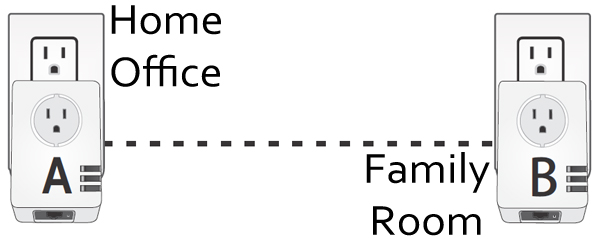
Powerline adapters all synced up
Step 2: Connect the first powerline adapter to your router
Take one of the Ethernet cables and plug one end into the Ethernet port on the bottom of the TPL-421E2K and the other end into one of the LAN ports on your wireless router.
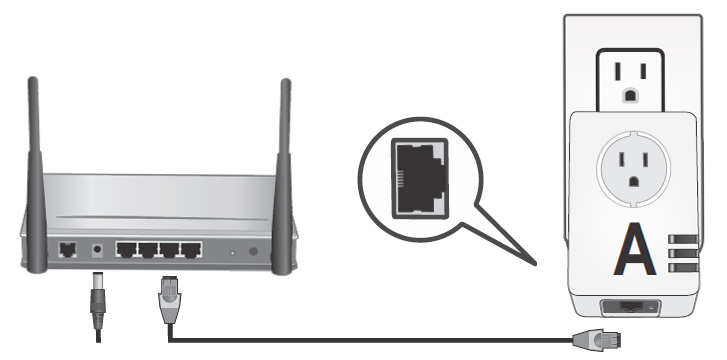
Connect the powerline adapter to your router
Step 3: Convert the second router into an access point
To extend wireless coverage, we need to get another access point closer to your weak signal area. Wireless routers contain a router and an access point (radio) and they are easier to find and cheaper than access points, which are usually designed for business use. So we’re going to configure a wireless router so we can use just its access point.
The general conversion process is described in How To Convert a Wireless Router into an Access Point, but the details vary from router to router. To convert the TEW-824DRU, the basic steps are:
1) Disable the DHCP service on the TEW-824DRU since your main internet-connected router is already assigning IP addresses to your devices. This is an important step; having two routers run DHCP services will lead to IP address conflicts and disconnect conflicting devices from your network!
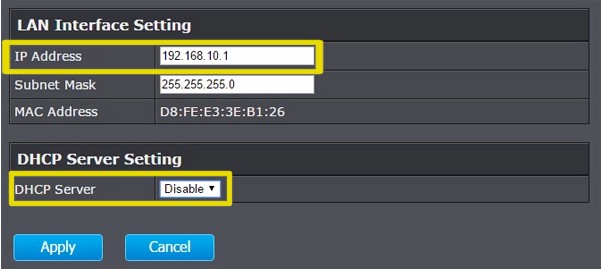
Change the LAN IP and disable the DCHP server
2) Change the TEW-824DRU’s LAN IP address to an available IP address on your main wireless router’s network. This will make it easier to find the TEW-824DRU’s web console for future changes and management.
3) Change the wireless settings and assign an SSID and wireless security key to the 2.4 GHz and the 5 GHz radios. For now, make the SSID different than your wireless router’s so we can make sure the extender is working later on.
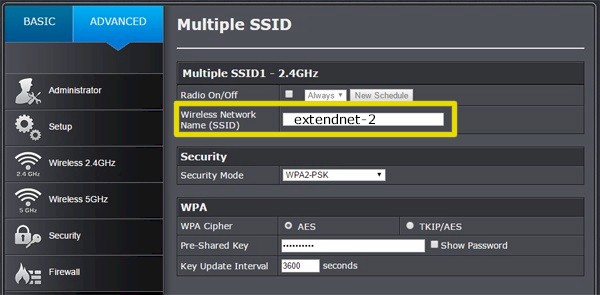
Set the extender SSIDs
The WAN port on the extending router won’t be used anymore. It’s a good idea to tape over the port to remind you it is specially configured and prevent others from trying to plug an Ethernet cable into it.
Step 4: Connect the second powerline adapter to the extender
Take the second Ethernet cable and plug one end into one of the LAN ports on the TEW-824DRU. Be sure not to use the router’s WAN port (that’s why we covered it with tape). Plug the other end of the cable into the second TPL-421E2K powerline adapter.
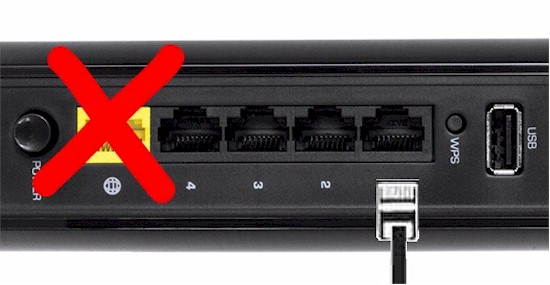
Connecting to the extender router
Step 5: Confirm that the connection between the two routers works
Plug a computer or laptop into the Internet-connected router and type in the IP address assigned to the TEW-824DRU. If you can access its management page, you have successfully connected both routers over powerline.
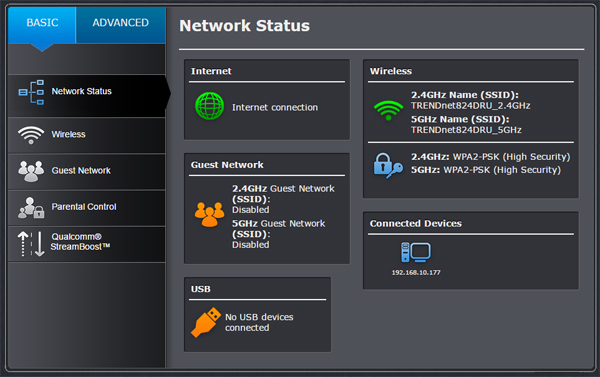
Connected to the TEW-824DRU admin page
Step 6: Confirm that the extender works
Now fire up a wireless device and look for the extender’s SSID. Connect to it and you should be able to browse the Internet from your wireless device, as well as connect to other devices on your network.
After everything is working, you can try setting the SSID to the same one as your existing network. But some devices may not be smart enough to use the stronger signal. In that case, you’ll need to give the extender a different SSID name and manually switch your device between networks. In either case, you can set the security key to be the same as your main router’s.
Enjoy your extended wireless network!

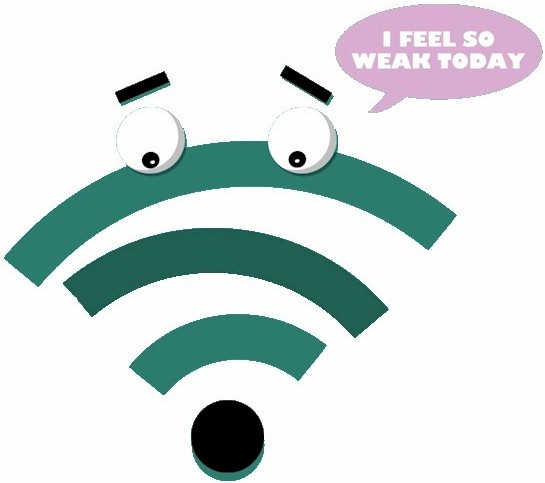
 Read more about TRENDnet.
Read more about TRENDnet.